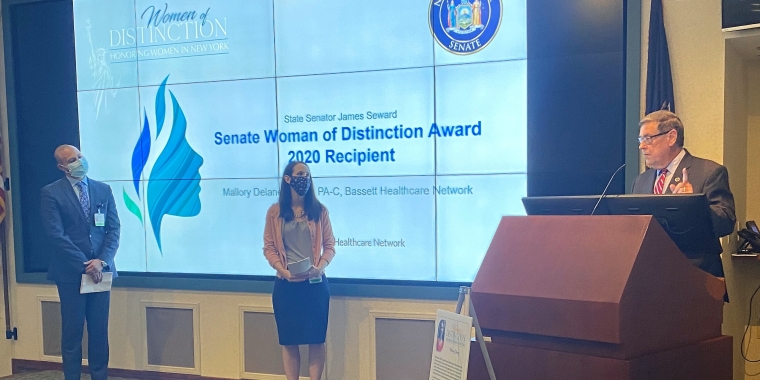
Made In America
James L. Seward
November 25, 2010
The holiday shopping season is upon us and consumers are being hit from all sides with a seemingly endless barrage of commercials and promotions as stores try to drum up business. While there are a number of factors shoppers use to evaluate potential purchases, one that should be kept in mind is where products are made.
Shopping our local main streets is one of the best ways to get in the holiday spirit and at the same time help spark the local economy. You can really add to the holiday cheer by making sure purchases include a “Made in U.S.A.” label. In fact, December is National Made in America Month.
President Ronald Reagan made the declaration in 1985 in an attempt to boost national pride and the national economy. In making the proclamation, President Reagan stated in part, “It is time for consumers both here and abroad to take a fresh look at what America has to offer. Those who do will find the traditional variety, high quality, and dependability that ‘Made in the U.S.A.’ has come to symbolize. They also will find this quality at more competitive prices.”
The proclamation also contained a warning of sorts:
“America's current trade problems have caused some to wonder whether this country may not be in danger of losing its reputation as a supplier of high quality products at competitive prices. As America's strong economic growth has led to increased demand for goods and services, imports have become more attractive because of the relative strength of the dollar. U.S. exports have become less attractive to foreign buyers for the same reason. Recently, however, increased growth in the economies of our trading partners and movement of the dollar toward a more sustainable equilibrium give us reason to expect that our trade deficit should ease in the near future. Tough foreign competition, in the last few years, has presented our manufacturers and our work force with a stiff challenge.”
Now a quarter of a century later, the sentiment continues to offer an important economic lesson.
Worldwide competition is fierce. In fact, the business battlefield is probably more daunting today than it is was then. Here in New York we have seen jobs disappear, leaving for other states and other nations with more favorable business climates. In order to successfully bounce back from the most recent economic downturn, consumers and elected officials alike must do their share.
From a legislative standpoint I stand ready to advance a number of initiatives aimed at improving our state’s business climate. The 2010 Job Creation and Retention Plan is one example. It includes tax credits tied directly to new private sector job creation to reward businesses that stay and grow in New York. It would also eliminate certain taxes for small businesses and manufacturers, create a special commission to eliminate burdensome government red tape and place a moratorium on new taxes, fees and regulations that stifle business growth.
Smart state spending cuts are also needed to reinvigorate the state’s economy. Reducing expenditures on Medicaid and making state government smaller by consolidating state government agencies are just a couple of proposals that must be part of the blueprint to move our state forward.
Finally, President Reagan’s National Made in America Month proclamation goes on to say, “In an increasingly competitive world, we Americans must redouble our efforts to make products of the highest quality in the most efficient way and market them aggressively.”
This sentiment seems to be the least difficult to accomplish. As a rule, Americans take a great deal of pride in their work and American made products are consistently rated among the best in the world in a number of categories. If you need a reminder, check the label while you are doing your holiday shopping, I’m certain you will be proud to take home an item emblazoned with the words, “Made in U.S.A.”
#####
Share this Article or Press Release
Newsroom
Go to NewsroomMohawk Valley Nine Pledge Support for Remington
September 28, 2020

Senator Seward Pays Tribute to Senate Woman of Distinction
September 8, 2020


